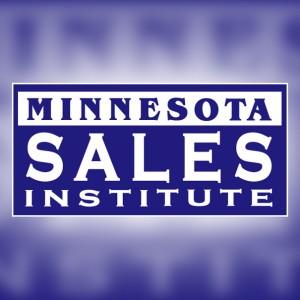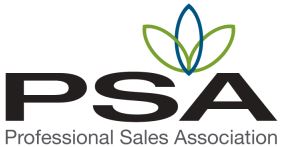Over the past few years, the lumber and building materials industry has faced one of the most volatile stretches in recent memory. Supply chain shortages, unpredictable delivery schedules, and pricing swings forced everyone — dealers, suppliers, and contractors alike — to make fast, sometimes uncomfortable decisions to meet customer demands.
Some long-time customers drifted away, not necessarily because they wanted to, but because they had to. They went where they could get materials when they needed it. And now, as the market stabilizes and inventories normalize, it’s time to rebuild those relationships to start future transactions and orders.
This isn’t about chasing lost business. It’s about demonstrating that our commitment has changed — and improved. Contractors don’t want apologies; they want assurance. They want to know that the next time they place an order, you’re ready to deliver on your promises, create value and serve as an extension of their reputation.
Acknowledge the Past, but Focus on What’s Changed
Reconnecting starts with honesty. Everyone in this industry lived through the chaos — missed and messed-up shipments, backorders, and long lead times. You don’t need to pretend it didn’t happen, but you also shouldn’t stay stuck there.
When you call a former customer, you acknowledge what happened, take responsibility, and immediately pivot yourself to what’s different and better now.
“I know last year was rough with the supply chain and other areas of uncertainty. We’ve made some big changes since then — like improved forecasting when inventories start to become unpredictable, expanded vendor relationships with acceptable substitutes, and tighter delivery windows to prevent disruption and theft. I wanted to reach out and show you how we’ve turned things around.”
This approach communicates respect and progress. It tells the contractor that you’ve not only learned from the challenges but invested in making sure they don’t happen again.
In my experience, most customers don’t leave because of failure — they leave because of silence. If you reach out with transparency and confidence, many will give you the chance to re-earn their trust, if you proactively contact them with an intent to serve them by offering the best value and sell with the best price and terms.
Rediscovering Opportunity in Dormant Accounts
A contractor who hasn’t ordered in six months, when they ordered every week before, isn’t necessarily gone — they’re just quiet. They already know who you are and what you offer; they just need to be given a call and a reason to come back.
Start by identifying your dormant or secondary accounts — those who used to be steady but now only order occasionally, often when their replacement supplier runs short.
Those are the easiest wins because the relationship already exists.
When reaching out, make the conversation about them, not you:
“I wanted to learn more about the market you are focusing on and how your projects are going this season? We’ve improved how we work with contractor orders and deliveries, and I’d love to see if there’s a way to support you better with a new order.”
It’s not about quoting a job or matching a price. It’s about curiosity — showing genuine interest in their business and serving them again.
Reactivation is the lowest-cost, highest-return form of new business. Most sales teams overlook it because it feels uncomfortable or possibly embarrassing but these are conversations with people who already know your value — they just need a reminder. Your reengagement shows your strength and commitment to them and the market you serve.
Lead with Your Renewed Commitment
Here’s the truth: price is rarely the reason contractors leave — consistency can be a factor, along with unrecognized outcomes of management decisions without understanding their true impact and consequences.
Today, the biggest differentiator in our industry isn’t product selection or even speed. It’s reliability — the confidence when a contractor calls, you’ll have what they need, when they need it, and in some cases sharing with them a better product and process. That’s where value is created and claimed.
That’s where your company’s renewed commitment comes in. Based on better leadership decisions, credible customer feedback and updated market trends. Whatever the change, make sure they know about it. Make a list of them.
“We’ve made a serious investment in improving service and process priorities. We’re committed to making your projects run smoother. Can we demonstrate it to you with your next order?”
Make Every Call Personal and Purposeful
A call that sounds like “checking-in” or “touching-base” is easy to ignore. A call that feels intentional gets attention.
Before reaching out, review past activity: what did they buy, what type of projects were they doing, and what challenges came up? Use that insight to personalize your approach and message.
Example:
“Last time we worked together, you were framing multifamily projects on the north side. Are you still focused there? We’ve improved some of our systems — that could work well within your process to keep crews moving between sites to meet deadlines.”
This kind of message shows relevance, preparation, and respect for their time. It also demonstrates that your call isn’t random; it’s thoughtful.
Every conversation should have a purpose — to reconnect, rebuild, or reinforce value. Not to ask for a favor, but to offer one.
Turn Second Chances into Long-Term Partnerships
When a contractor gives you another shot, that’s not a free pass — it’s a test. They’re watching to see if things have truly changed. Deliver flawlessly. Then, follow up intentionally:
“I appreciate the chance to work together on that last project. How did it go on your end? How would you rate our performance on a scale from 1 to 10? Anything, we can fine-tune for next time?”
That simple question does more to strengthen relationships than any discount, rebate or promo ever could. It tells them you’re invested in their success, and our relationship — not just your next order.
Consistency builds confidence. Confidence builds loyalty. And loyalty, once restored, is incredibly resilient.
Final Word: Rebuilding with Purpose
The building materials business has always been about relationships. Products may change, prices may swing, but trust — earned and re-earned — remains the real currency.
If the last few years have taught us anything, it’s that customers will forgive disruptions when they see an increased commitment. When you show up with improved systems, renewed energy, and genuine care, you remind them why they partnered with you in the first place.
At the Minnesota Sales Institute, we say: “Same business, different ways, better results.” Reconnecting with lost customers is exactly that — doing the same business, but in a better way. It’s about demonstrating progress, not perfection.
So, start calling those past contractors. Not to apologize — but to prove that this time, you’re ready to deliver better than ever to their expectations of you, because of your increased commitment.
Scott Plum is the founding president of the Minnesota Sales Institute, where he works with salespeople and leaders to strengthen relationships, improve performance, and increase revenue through authentic conversations. He’s the author of “Taking Off Into the Wind – Creating Lift Out of Life” and co-host of the WINNING AT SELLING podcast globally ranked in the top 1% of all podcasts.







